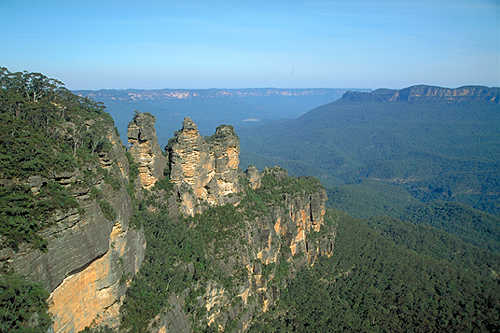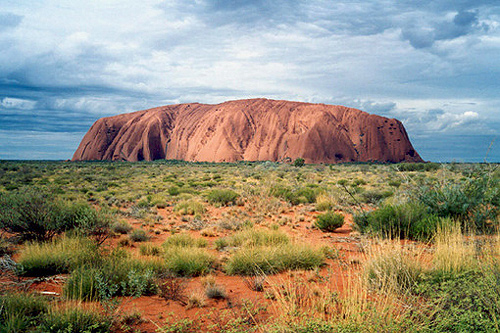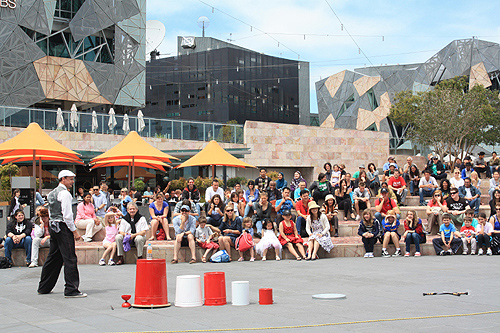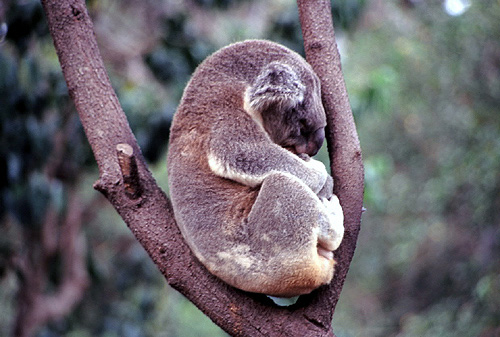Overview of Australia
About
Australia is the only country in the world to occupy a single continent. This land of contrasts contains many different climates with unique flora and fauna found nowhere else on Earth. Australia also enjoys an international reputation as a safe and friendly destination and the locals speak English.
Location
Situated below Asia, Australia is bordered by the Pacific Ocean, Indian Ocean, Southern Ocean, Tasman Sea, Coral Sea, and Arafura Sea. The nearest country is not New Zealand but Papua New Guinea to the north. However, New Zealand is the only country near Australia that has a similar culture. Australia and New Zealand combined make up the region called Australasia. While both countries are sporting rivals, they are tied together by a number of economic treaties.
Australia's unique geographical location means that it is isolated from the rest of the western world. Itis ideally suited to trading with Asia more so than Europe or North America. Currently, about half of Australian exports go to Asia.
Australia is about the same size in area as the United States but with a much smaller population. The size comaprison excludes Alaska, but Australia does own a vast area in Antarctica which is not recognised by the USA, but is recognised by countries such as Britain and France. Australia is actually the the most sparsely populated continent after Antarctica.
Cities
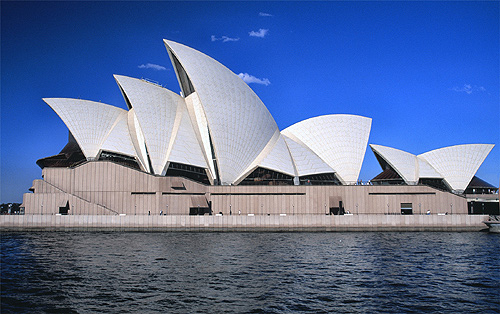
While Australia is an isolated country with vast unpopulated areas dubbed the 'outback', it is also one of the most urbanised countries in the world.
The most iconic city that often symolises the whole of Australia is Sydney. This beautiful harbour city is renown for it coastal beaches and sunny climate. Nestled on Sydney's magnificent harbour are two Aussie landmarks, the Sydney Opera House and Sydney Harbour Bridge. Just outside Sydney lies the Blue Mountains, a natural area of canyons, rainforest, waterfalls, populated by animals such as the kangaroo and a large variety of colourful parrots.
The second largest city Melbourne is known as the cultural capital with an abundance of theatres, superb restaurants, and fashion boutiques. Located near stunning coast and rugged mountains, there is much to do in this southern metropolis.
Sub-tropical Brisbane the country's third largest city is nestled on the Brisbane River and not too far from coastal attractions. Behind this city are scenic hills and thelargest tract of subtropical rainforest on Earth.
Perth to the west is an organised, clean, and modern city with uncrowded beaches built on the shores of the Indian Ocean and on the doorstep of the outback.
The Gold Coast is the California of Australia with golden beaches, glitzy shopping and nightlife and located near some world heritage areas.
Adelaide features a busy CBD surrounded by expansive parklands. The city hosts lively festivals among its colonial stone architecture. Nearby is Australia's most important wine producing region, the Barossa.
Smaller cities include Canberra, the nations capital which is built around lakes and parks and surrounded by hills with snowy mountains further afield. Then there is Hobart, a scenic city located amoung mountainous terrain on the banks of River Derwen. Pristine wilderness areas lie nearby. Darwin at the top of Australia is where Australia meets Asia. The location creates a melting pot of food and culture. Nearby are huge tropical wilderness areas, some as large as small countries. Cairns in the northeast is the place to go if you want to visit the Great Barrier Reef and the oldest rainforest on Earth. Alice Springs located in the heart of the nation is a true outback city near huge monoliths, canyons, dried salt lakes, and large deserts.
Climate & Landscape
The climate in Australia is varied and ranges from tropical to sub alpine. Australia is also the oldest land mass on Earth and the most eroded of all continents, with some notable exceptions. This vast land mass is also the most stable of all continents, with few major fault lines. This means that Australia is very stable and as a consequence, it lacks high mountain ranges such as what you find in neighboring New Zealand or New Guinea. However all the eons of erosion have formed some of the strangest geographical features on Earth, such as Uluru in the Northern Territory, or the Bungle Bungles Mountains, and The Pinnacles of Western Australia. Eons of erosion has also given Australia many spectacular sandy beaches, in fact Australia has more beaches than any other nation on Earth.
Australia
is also the driest inhabited continent on Earth, but the eastern seaboard
where the majority of the population is concentrated, is a lush and fertile
area, with a climate ranging from temperate to tropical. The main mountain
range is known as the Great
Dividing Range or Eastern Highlands. This long mountain chain separates
the green eastern seaboard from the barren Outback. The southern end of the
Great Dividing Range has an area known as the Snowy Mountains, or otherwise
known as the the Australian Alps. This area actually receives more snow than
Switzerland, and is the only area suitable for skiing in Australia. Australia
also contains many pockets of tropical and temperate
rain forest on the eastern coast, but the predominate forest in Australia
is Eucalyptus.
The
south west corner of Western Australia has a Mediterranean climate and the
Northern regions of this continent have areas of rain forest and below that
are large areas of savanna grasslands. Tasmania the island state in the south
has large areas of temperate wilderness and steep mountains.
The vast interior of Australia is known as the Outback. This term describes the vast deserts in the centre of the Australian continent. However it is very hard to define exactly where the Outback starts and finishes. The Outback is best described as a feeling rather than a physical location. When you have traveled for hundreds of miles from civilization, and when you realize that you are in the middle of nowhere, or you are just struck with awe at the sheer size and emptiness of the landscape, then you know that you are in the Outback. The Outback is a harsh and sparsely populated environment, so you need to be prepared if you decide to travel there. Travelers are expected to notify authorities when making such trips and it is also wise to carry spare petrol and water in case you break down. The Outback for all its dangers is a beautiful place and is one of the few places in the world where one can experience true solitude.
People
Australia is one of the most urbanized countrys in the world, but the rugged interior of the country has helped shape the unique Aussie character. The famous outback character, personified as Crocodile Dundee still exists in Australia and even though the outback contains a small part of the Australian population it is disproportionately ascribed to Australians as a whole.
Australia is predominately made up of people of European decent, about 94%, with 4% Asian, and 1.5% native aboriginals. Christianity is the most popular belief system with about 75% adherence, while Muslim and Buddhist comprise about 1% of Australia's population each. 0.5% are Jewish and the remainder are Atheist or Agnostic.
Australians love sport and are highly competitive. Popular games played here include, Rugby, Aussie Rules, Soccer, Netball, and Cricket. Most Australians live near the sea and this accounts for the popularity of water sports such as swimming and surfing.
Summary
This unique Great Southern Land known as Australia, is a huge land mass of great contrasts. There are many types of climate and landscape, from rain forests to deserts, sophisticated cities to the remote outback, and rugged mountain ranges to endless plains. The flora and fauna are unique, and when you consider that Australia is the oldest continent on Earth, with an Aboriginal history many thousands of years in the making, it lies in direct contrast to just over 200 years of European history.
Author & photographer: David Johnson (Virtual Australia). Providing a credit or link is appreciated.
Our content: logos, site names, text, photos, and website design are protected by international copyright law.
Original versions of our photos can be purchased / licensed & web versions can be shared subject to conditions.


